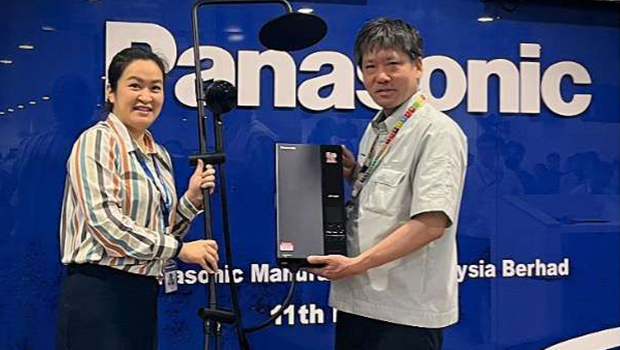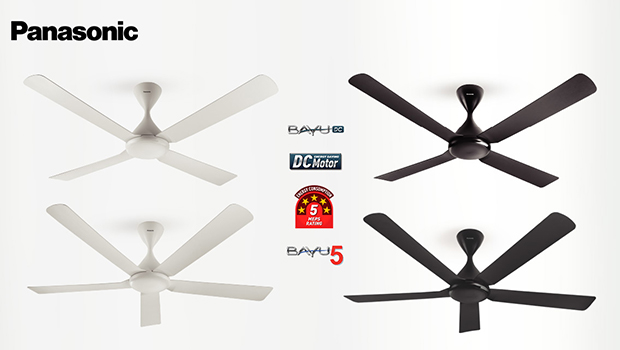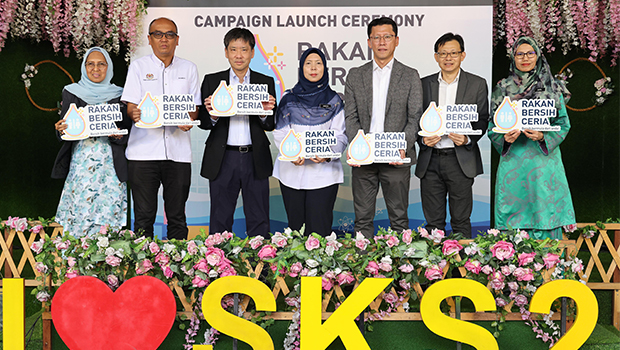Pathogenic Fungus*1 99% Inactivated by nanoe™ (Hydroxyl Radicals Contained in Water) Technology
- Got a summer cough? It might be caused by fungus
Osaka, Japan – Panasonic Corporation ("Panasonic") today announced that, under the supervision of Dr. Masafumi Mukamoto, Professor Emeritus of Osaka Metropolitan University, the company has confirmed the inactivating effect of nanoeTM (Hydroxyl Radicals Contained in Water) on Trichosporon, a fungus that is a major cause of hypersensitivity pneumonitis.

Hypersensitivity pneumonitis is a disease caused by repeated inhalation of spores released into the air by moulds or fungi. Its symptoms are mainly coughs and fever, similar to a cold or viral infection, and in fact, 70% of patients surveyed had been diagnosed with another illness such as the common cold.*2 Another distinctive aspect is that symptoms appear only in environments where spores can be inhaled, such as inside a house, with symptoms improving when the patient leaves the house. The number of patients with hypersensitivity pneumonitis tends to increase, especially in hot and humid regions, because the moulds that cause hypersensitivity pneumonitis tend to multiply in moist environments with poor sunlight and ventilation.
The inactivating effect of nanoeTM on eight major household fungi or moulds,*3 and three untested harmful moulds*4 had been demonstrated previously, and the inactivation mechanism was partially identified.*4 However, its effectiveness against Trichosporon, a fungus that accounts for 70% of the cause of hypersensitivity pneumonitis, had not yet been verified.*5
Thus, a new test was conducted to verify its effectiveness against Trichosporon, which confirmed an inactivation effect of 99% or more. Combined with the previous verification results, the experiment proved that nanoe™ is effective in inactivating all three types of pathogenic moulds or fungus*1 that account for 70% of the causes of hypersensitivity pneumonitis.

Note that this verification was conducted under the test conditions described below, and does not necessarily verify the effectiveness of nanoe™ in actual spaces where it is used.
Panasonic will continue to develop nanoe™ technology while pursuing its potential with the goal of contributing to society by providing safe and reassuring spaces.
■ Key points of verification testing
- A survey on the proportion of irritable pneumonia-causing moulds in the air in general households found that moulds causing hypersensitivity pneumonitis were detected in 62.5% of surveyed cases (Verified Data 1)
- The inactivating effect of nanoe™ on Trichosporon, a fungus that is a major cause of hypersensitivity pneumonitis, was verified and found to be 99% or more effective (Verified Data 2)
- A morphological observation of Trichosporon fungus exposed to nanoe™ confirmed that the inactivating mechanism works by destroying the cell wall, causing the contents to leak out (Verified Data 3)
■ Verified Data 1
- Verifying organisation: TechnoSuruga Laboratory
- Object of verification: Air samples from the living rooms of eight general households collected by air samplers
- Results of verification: As shown in Figure 2 below, moulds or fungi causing hypersensitivity pneumonitis were identified in 62.5% of the general households surveyed.

■ Verified Data 2
- Verifying organisation: Kitasato Research Center for Environmental Science
- Object of verification: Trichosporon, Cladosporium, Candida
- Verification device: nanoe™ generator
- Verification method: A nanoe™ generator was positioned 10 cm above the bottom surface inside a 45-liter test space.
A petri dish containing the test object was placed inside, and after it was exposed to nanoe™ for a specified period of time, both a count of viable fungal cells and morphological observation were conducted using a scanning electron microscope.

- Results of verification: After viable Trichosporon fungus cells exposed to nanoe™ were counted, it was confirmed to be 99% or more effective in inactivating these cells. In addition, morphological observation confirmed that the inactivating mechanism works by destroying the cell wall, causing the contents to leak out.





■ Comment from Dr. Masafumi Mukamoto, Professor Emeritus of Osaka Metropolitan University
Trichosporon and other fungi that cause hypersensitivity pneumonitis, much like other moulds, prefer a hot and humid environment and are found in abundance in most households. This is why hypersensitivity pneumonitis has the potential to affect any of us living in our homes. Those at particular risk include anyone working from home, whose numbers have increased since the COVID-19 pandemic, and homemakers who spend a lot of time in the home on a daily basis. I think it is truly significant that we were able to verify the inactivating effect of nanoe™ technology on pathogenic fungus that causes hypersensitivity pneumonitis.
■ Principle of generating nanoe™
The atomizing electrode is cooled by a Peltier element, which condenses moisture in the air to create water. Afterwards, a high voltage is applied across the atomizing electrode and the opposite electrode to generate hydroxyl radicals contained in water that contain OH radicals of approximately 5 to 20 nanometers in size. (Figure 5)

*1 Three types of mould or fungus, including Trichosporon, which was verified this time, in addition to Cladosporium and Candida, which were verified previously
*2 Results of a questionnaire survey of 30 patients with hypersensitivity pneumonitis (survey by Panasonic)
*3 [Press Release] Verification of the effect of hydroxyl radicals contained in water "nanoe™" on moulds - Verification of its effectiveness to suppress substances that cause mould allergens as well as the growth of mould contained in house dust and other materials (September 14, 2011) <https://www.panasonic.com/content/dam/Panasonic/Global/consumer/nanoe/ja/topics/newsrelease_110914.pdf>
*4 [Press Release] Hollow Out and Sterilize Molds: The Mechanism of Fungus Inactivation by Hydroxyl Radicals Contained in Water (Nano-sized Electrostatic Atomized Water Particle) Technology Was Partially Clarified (May 30, 2023)
<https://news.panasonic.com/global/press/en230530-3>
*5 Reference: Ando, M., et al.: Japanese summer-type hypersensitivity pneumonitis: Geographic distribution, home environment, and clinical characteristics of 621 cases. Am Rev Respir Dis 144:765-769, 1991.
Disclaimer:
This press release contains information and results of tests conducted on certain subject matters and/or environment. Findings relate to specific and distinctive assessment. No presumptive representation is made on untested matters.
Recommend Pages
News articles relevant to this topic were not found.
-
Launch of U series Rain Shower by Panasonic Manufacturing Malaysia Berhad

-
Panasonic Launches Next-Generation Air Conditioning Series to Redefine Home Comfort in Malaysia

-
Panasonic Sets New Malaysia Record, Inspires Youth Environmental Action through Battery Recycling Drive

-
Launch of Panasonic Bayu Ceiling Fan by Panasonic Manufacturing Malaysia Berhad

-
Panasonic Strives to Combat Haze with Innovative Indoor Air Quality Solutions

-
Panasonic Malaysia Champions School Hygiene with Groundbreaking Bidet Initiative

-
Cumulative Global Shipments of nanoe™ Devices Exceed 100 Million Units

-
Panasonic Malaysia’s New Study Reveals Filtered Water Removes Larger Impurities Compared to Boiling Water











